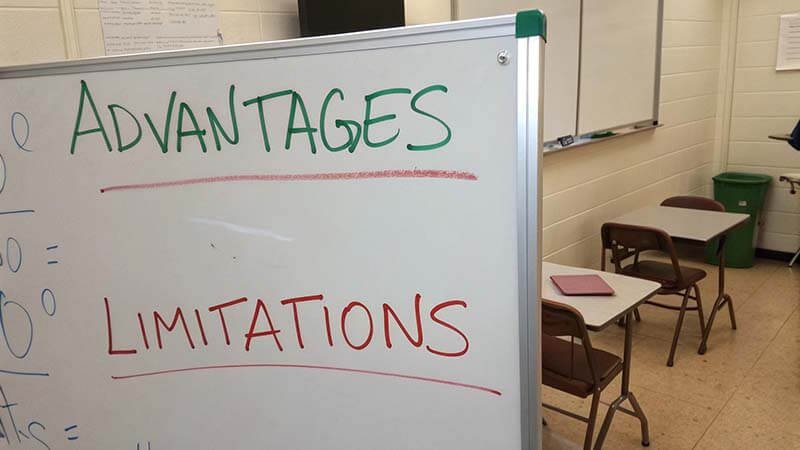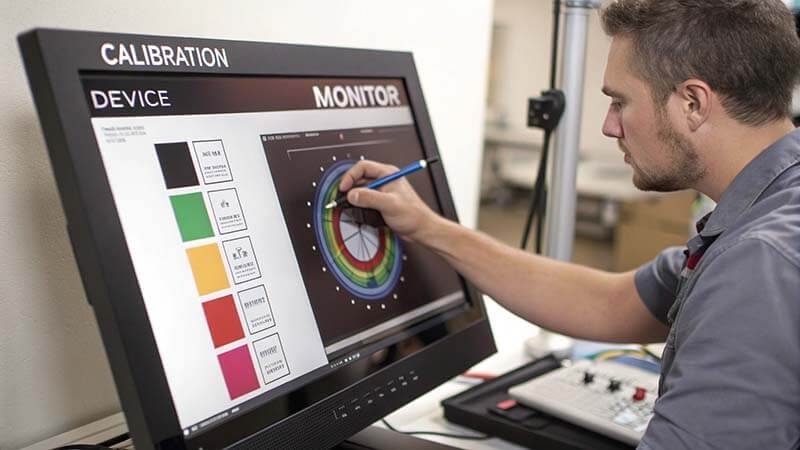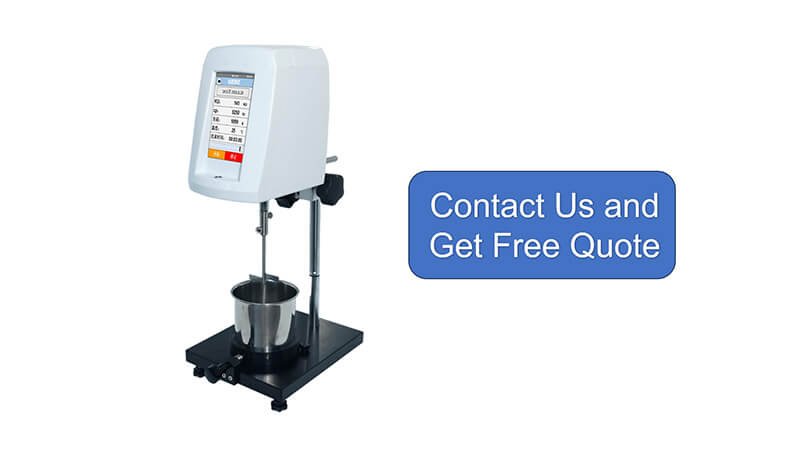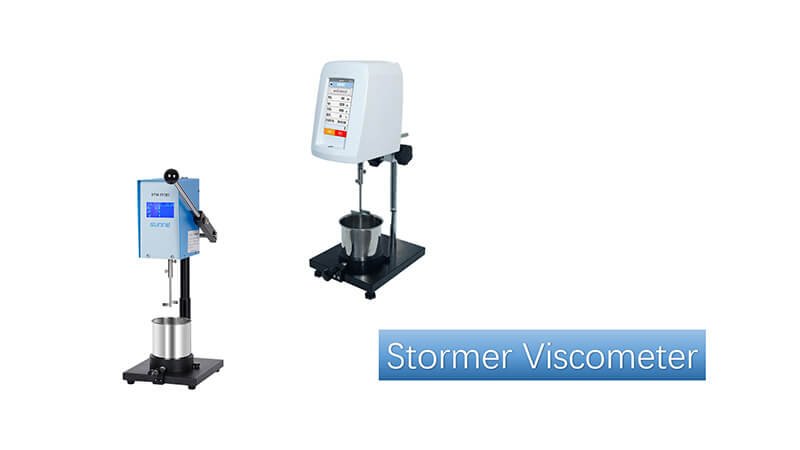Struggling to measure the consistency of paints and coatings? Need a reliable method for quality control in this industry? The Stormer viscometer might be your answer.
A Stormer viscometer measures fluid viscosity, primarily for paints and coatings, by determining the load needed to rotate a paddle-type spindle at a fixed speed (usually 200 rpm), with results often expressed in Krebs Units (KU).
As a professional viscometer manufacturer at Martests, we deeply understand the importance of specialized instruments like the Stormer viscometer, especially in the paint and coatings industry.
My experience in this field, dealing with clients from Europe to Southeast Asia, echoes a common sentiment: customers are most concerned about three core elements. These are measurement accuracy, ease of operation, and overall cost-effectiveness. While our main line at Martests includes rotational viscometers, understanding the Stormer is crucial for anyone in material testing. Let's explore this specific instrument further.
How Does a Stormer Viscometer Work?
Curious about the mechanics behind this paint industry workhorse? Wondering how it actually measures viscosity? Understanding its operation is key to appreciating its value.
A Stormer viscometer works by rotating a paddle-shaped spindle immersed in the test material at a constant speed, typically 200 rpm. The instrument measures the load (weight) or torque required to maintain this speed.
The principle is quite straightforward, which contributes to its ease of use—a factor many of our customers, including experienced buyers like Jacky from Italy, highly value. At Martests, even though we focus on rotational viscometers, we appreciate elegant engineering in any measurement device.
Core Operational Details
The Stormer viscometer's operation revolves around a few key aspects:
- The Spindle: A distinctive paddle-shaped (or "flyer-type") rotor is used. This specific design is meant to simulate conditions like brushing or rolling paint.
- The Drive Mechanism:
- Traditional Models: These use a falling weight system connected to the spindle via gears. The user adjusts the weights until the spindle rotates at exactly 200 revolutions per minute. The amount of weight (in grams) needed is then used to determine viscosity, often converted to Krebs Units (KU). A stroboscope or a timed revolution counter helps to ascertain the 200 rpm speed.
- Modern Digital Models: These often use a motor to drive the spindle. The instrument automatically adjusts the torque to maintain 200 rpm and directly displays the viscosity in KU, grams, or centipoise (cP). This significantly improves ease of operation.
- The Measurement: The fundamental measurement is the resistance the fluid offers to the paddle's rotation. More viscous fluids require a greater load or torque to achieve the 200 rpm.
- Krebs Units (KU): This is the most common unit of measurement for Stormer viscometers, particularly in the paint industry. There are standard conversion charts or calculations to derive KU from the load in grams.
Understanding this mechanism helps users appreciate why it's a standard for certain applications.
What Are The Applications of Stormer Viscometer?
Wondering where this specific viscometer truly shines? Which industries rely on its measurements for quality control? Its applications are quite focused but very important.
Stormer viscometers are primarily used in the paint, coatings, and ink industries to measure the consistency of these materials under conditions that mimic application processes like brushing or rolling.

This focus on paints and coatings is something we've seen consistently at Martests. When I talk to distributors, for instance, in the Middle East or South America who deal with industrial supplies, the Stormer often comes up in discussions about paint quality. Its ability to provide practical, application-relevant viscosity data is its main strength.
Primary and Secondary Uses
- Paints and Coatings: This is the Stormer viscometer's home turf. It's used to:
- Check the consistency of incoming raw materials.
- Monitor viscosity during the manufacturing process.
- Perform quality control on finished products to ensure they meet specifications for application (brushing, rolling, spraying).
- It helps ensure that different batches of paint will behave consistently for the end-user.
- Inks: Printing inks also require specific flow properties, and Stormer viscometers can be used to assess their consistency.
- Adhesives and Pastes: Some less-Newtonian adhesives and thicker pastes can also be tested, where a robust, simple measurement is needed.
- Other Viscous Materials: Occasionally, it might be used for other materials like slurries, drilling muds, or some food products (like chocolate or heavy sauces), though rotational viscometers are often more versatile for these broader applications.
The key is that the Stormer viscometer excels with materials whose viscosity is important during application, simulating a moderate shear rate. This is why "measurement accuracy" for this specific purpose is so critical to users.
What Are The Advantages and Limitations of Stormer Viscometer?
Considering a Stormer viscometer for your lab? It's wise to weigh its pros and cons. Every instrument has its strengths and weaknesses depending on the task.
Advantages include ease of use, robustness, and industry acceptance for paints. Limitations involve a fixed shear rate, making it less suitable for full rheological studies or very precise measurements outside its niche.

From our perspective at Martests, where we manufacture top-quality rotational viscometers, we see the Stormer as a specialized tool. It meets a specific need very well. The "ease of operation" and "cost-effectiveness" that our customers prioritize are definitely strong points for the Stormer in its intended applications.
Balancing Benefits and Drawbacks
| Aspect | Advantages | Limitations |
|---|---|---|
| Usability | Simple operation, especially digital models. Quick to learn and use. | Manual models require more operator skill to determine 200 rpm accurately. |
| Robustness | Generally sturdy construction, suitable for industrial environments. | Moving parts in weight-driven models can wear over time. |
| Speed | Relatively fast measurements once set up. | Sample preparation and temperature stabilization can still take time. |
| Cost | Can be more cost-effective than advanced rheometers for specific tasks. | High-end digital Stormers can still be a significant investment. |
| Industry Std | Widely accepted in paint/coatings (e.g., ASTM D562). | Limited applicability outside these specific industries. |
| Data | Provides practical KU values directly relevant to paint application. | Fixed shear rate (200 rpm) doesn't give a full picture of non-Newtonian behavior across different shear rates. |
| Accuracy | Good for comparative QC within its range and application. | May not be as precise as research-grade viscometers for broader viscosity ranges or sensitive materials. |
| Sample Vol. | Often requires a specific, relatively large sample volume (e.g., pint can). | Not ideal for very small sample quantities. |
Understanding these points helps a purchasing manager decide if it's the right fit. For many in the paint industry, the advantages clearly outweigh the limitations for routine QC.
How to Calibrate a Stormer Viscometer?
Ensuring your Stormer viscometer gives accurate readings is vital, right? Wondering about the calibration process? Regular calibration maintains measurement integrity and trust in your results.
Calibrate a Stormer viscometer using certified standard viscosity oils with known Krebs Units (KU) values at a specific temperature. Adjust the instrument or note deviations based on these standards.

"Measurement accuracy" is a top concern for our clients at Martests, regardless of the viscometer type. For Stormer viscometers, calibration is key to maintaining that accuracy, especially when results are used for critical quality control decisions in the paint and coatings industry.
Key Calibration Steps
The general procedure for calibrating a Stormer viscometer, whether it's a manual weight-driven model or a modern digital one, involves these steps:
- Gather Materials: You'll need certified viscosity standard oils. These oils have a precisely known viscosity in KU (or cP that can be converted) at a specified temperature (usually 25°C / 77°F). You'll also need a clean, standard-sized sample can (typically 1-pint) and an accurate thermometer.
- Temperature Control: Ensure the standard oil, the viscometer spindle, and the sample can are all at the specified calibration temperature. Temperature fluctuations are a major source of error in viscosity measurements. A water bath can be helpful.
- Prepare the Viscometer: Make sure the viscometer is clean, level, and operating smoothly. Attach the correct paddle-type spindle.
- Run the Test:
- Manual Models: Place the standard oil in the can, immerse the spindle, and then add weights to the hanger until the spindle rotates at exactly 200 rpm in 30 seconds (or as timed by a stroboscope). Record the weight used.
- Digital Models: Place the standard oil in the can, immerse the spindle, and run the instrument. It should automatically adjust to 200 rpm and display a reading.
- Compare and Adjust: Compare the viscometer's reading (or the KU value corresponding to the weight used on manual models) to the certified KU value of the standard oil.
- If there's a discrepancy, some digital models may have a calibration adjustment feature. For manual models, you ensure the timing and weight measurement are precise. Often, you'll create a calibration curve or apply a correction factor if direct adjustment isn't possible.
- Record Keeping: Always document your calibration results, including the date, standard oil used, viscometer readings, and any adjustments made.
Regular calibration, often recommended monthly or quarterly, or after any service, ensures your Stormer viscometer continues to provide reliable data.
What is The Difference Between Stormer Viscometer and Other Viscometers?
Confused about how a Stormer stacks up against other viscosity measuring devices? What makes it unique? Understanding these differences helps select the right tool for your specific needs.
The Stormer viscometer measures viscosity at a fixed shear rate using a paddle, primarily for paints (KU). Other types, like rotational or capillary, offer variable shear rates or different principles for broader applications.
At Martests, we specialize in rotational viscometers, which are known for their versatility. However, we recognize that instruments like the Stormer viscometer have a distinct and valuable place. For instance, Jacky, one of our clients in Italy, uses rotational viscometers for R&D but might recommend Stormers to his customers in the local paint industry for their routine QC.
Comparing Key Viscometer Types
Here’s a simplified comparison to highlight the differences:
| Feature | Stormer Viscometer | Rotational (e.g., Brookfield-type, Martests) | Capillary Viscometer | Cone & Plate Viscometer |
|---|---|---|---|---|
| Principle | Paddle spindle at fixed speed (200 rpm), measures load/torque required. | Various spindles rotate at controlled speeds, measures torque. | Fluid flows through a narrow tube under gravity, measures flow time. | Cone rotates on a flat plate, measures torque. |
| Shear Rate | Typically fixed (simulates application). | Variable, allows for shear rate sweeps, rheology. | Usually fixed by tube dimensions. | Defined, uniform shear rate. |
| Typical Units | Krebs Units (KU), grams, cP. | Centipoise (cP), Pascal-seconds (Pa.s). | Centistokes (cSt - kinematic), cP (dynamic). | Centipoise (cP), Pascal-seconds (Pa.s). |
| Primary Use | Paints, coatings, inks (consistency). | Wide range of fluids, QC, R&D, rheology. | Newtonian fluids, oils, solvents (kinematic visc.). | Small samples, high shear rates, absolute viscosity. |
| Sample Volume | Moderate to large (e.g., pint can). | Variable; can be small with adapters. | Small. | Very small. |
| Newtonian Fluids | Can measure, but optimized for non-Newtonian paints. | Measures both Newtonian and non-Newtonian. | Primarily for Newtonian fluids. | Measures both Newtonian and non-Newtonian. |
| Ease of Use | Generally simple, especially digital models. | Varies by model complexity; user-friendly designs. | Simple procedure but requires careful timing. | Requires precision in setup. |
The choice depends heavily on the material being tested and the information needed. The Stormer is excellent for its niche, while rotational viscometers, like those we offer at Martests with customizable logos, provide broader characterization capabilities.
What Are The Standard Testing Methods Using Stormer Viscometer?
Need to ensure your paint testing is compliant and comparable? What official methods guide the use of Stormer viscometers? Adhering to standards is crucial for quality assurance.
The primary standard testing method for Stormer viscometers is ASTM D562, "Standard Test Method for Consistency of Paints Measuring Krebs Unit (KU) Viscosity Using a Stormer-Type Viscometer."

Following standardized methods is something we always emphasize to our B2B clients at Martests, whether they are large instrument distributors or specialized resellers. It ensures that results are consistent and reliable, which is vital for international trade and quality management. For Stormer viscometers, ASTM D562 is the go-to standard.
Deep Dive into ASTM D562
This standard is fundamental for the paint and coatings industry. Here's what it generally outlines:
- Scope: It covers the procedure for determining the consistency of paints and related coatings using a Stormer-type viscometer, expressing results in Krebs Units (KU).
- Apparatus:
- Viscometer: Specifies the Stormer viscometer with the paddle-type rotor (often called a "flyer-type" or "paddle" spindle).
- Weights/Drive: For manual models, a set of weights. For automated models, a drive system to achieve 200 rpm.
- Container: A standard 1-pint (or 500 mL) can.
- Thermometer: For measuring sample temperature accurately.
- Procedure:
- Temperature Control: The sample and apparatus should be at a standard temperature, typically 25 ± 0.2 °C (77 ± 0.5 °F).
- Sample Preparation: The paint sample must be thoroughly mixed and free of air bubbles.
- Measurement: The paddle is immersed in the paint to the specified depth. The instrument is operated to achieve a rotational speed of 200 rpm.
- For manual models, weights are added until this speed is reached. The load in grams is then converted to KU using a lookup table or formula provided within the standard or by the viscometer manufacturer.
- For digital models, the instrument typically displays the KU value directly.
- Reporting: Results are reported in Krebs Units (KU). The temperature of the test should also be reported.
Adherence to ASTM D562 allows for consistent comparison of paint consistency across different labs and manufacturers. It’s a cornerstone for quality control in this sector, ensuring "measurement accuracy."
How Much Does a Stormer Viscometer Cost?
Budgeting for new lab equipment? What's the typical investment for a Stormer viscometer? Price can vary, but understanding the factors helps in making an informed decision.
The cost of a Stormer viscometer can range from a few thousand dollars for basic manual models to several thousand for advanced digital units with more features and higher precision.

"Cost-effectiveness" is a critical factor for many of our clients at Martests, including those like Jacky who seek a balance between quality and competitive pricing. As a factory with our own production lines, we understand the importance of providing value.
Factors Influencing Price
Several elements contribute to the final cost of a Stormer viscometer:
- Type (Manual vs. Digital):
- Manual (Weight-Driven): Generally less expensive. These require more operator skill and time to determine the correct weight for 200 rpm.
- Digital/Automated: More expensive but offer greater ease of use, direct KU readings, and often better repeatability. They automatically adjust motor speed or torque.
- Brand and Manufacturer: Established brands with a reputation for quality and support may command higher prices. At Martests, we focus on top quality for our viscometers, ensuring reliability.
- Features and Accuracy:
- Built-in temperature probes and control.
- Data output capabilities (e.g., USB, RS-232).
- Range of measurement (some models might offer broader gram load capabilities).
- Overall precision and build quality.
- Included Accessories: The package might include standard test cans, calibration oils, or different paddle types (though the standard paddle is most common for KU).
- Calibration Certification: Instruments traceable to national standards (like NIST) might have an associated cost for certification.
Purchasing managers for large distributors or company owners like Jacky typically evaluate not just the upfront cost but also the long-term reliability, ease of maintenance, and the support offered by the supplier. While Martests primarily supplies rotational viscometers, understanding the value proposition of instruments like the Stormer is key in the broader metrology market.
Conclusion
The Stormer viscometer is a vital tool, especially for paints and coatings. It offers simple, reliable consistency measurements in Krebs Units, crucial for industry-specific quality control.


